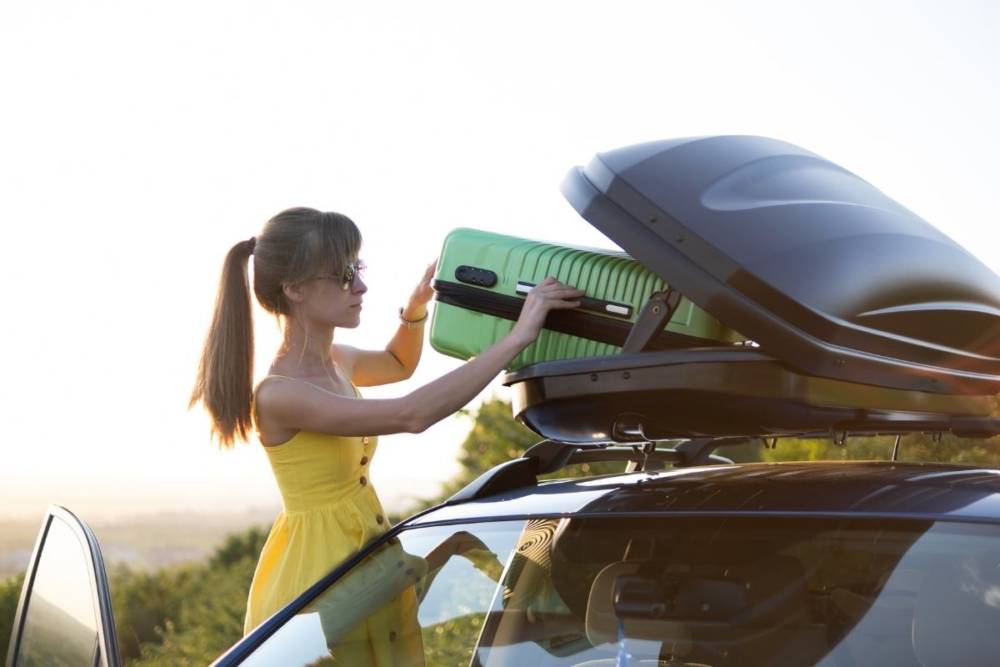When going on a lengthy road trip or a summer vacay, a roof box is a terrific option to add additional storage space for your belongings. Because we wanted to assist you in making the most of this additional space and getting the most value from your roof cargo carrier, we have compiled a list of our best recommendations for packing your box and ensuring that its contents are kept safe.
1. Be aware of any weight restrictions.
There is a maximum load capacity for every kind of roof box. Since these weights often fall between 50 and 75 kilograms, depending on the size of your box, it’s rare that you’ll need to worry about overfilling them; nonetheless, it’s still good knowledge to keep in mind. The maximum load capacity of your roof box should be listed either on the product website or in the literature that comes with your roof box.
Keep in mind that the weight restriction of the roof of your vehicle and the capacity of your roof bars may be less than the weight limit of the roof box.
Finally, remember your car’s maximum weight (again, this can be found in the handbook) while loading the bars and the box.
2. load the vehicle with the heaviest stuff first
Even if your car has a large trunk, you should still load the heaviest objects inside first, since the weight restriction of your vehicle is likely to be higher than that of your roof box.
You should still be able to see out of your rear window, so long as the items you carry don’t exceed a certain height. When you get to this stage, you should switch gears and begin packing the roof box.
3. Distribute the weight equally
We’ve reached the last discussion point on body mass index. It’s a little detail, but it may make a big difference if you want a smooth ride without any bumps or rattles from shifting cargo in your roof box.
If you want to keep your roof box from tipping over, it’s best to load it evenly with the heaviest objects in the middle.
4. Place your suitcases on top
Most roof boxes are structured in a manner that makes them perfect for storing bags, despite the common misconception that suitcases go in the boot and objects that aren’t so nicely packaged go in the roof box. Your roof box is essentially a giant suitcase that you’ve strapped to the top of your automobile.
Smaller bags may be possible to be placed alongside one another in a roof cargo box, making space for more belongings and preventing them from moving about. A bigger bag would be more accommodating and may act as an anchor for other stuff. Making the most of your packing space is key, so fill every available inch!
5. Substitute the uncomfortable things with the more conventional ones
A roof box may provide a convenient storage solution for objects with unusual dimensions, such as sports gear, camping furniture, or a tent. Instead of trying to squeeze them into the trunk or wedge them between the seats, you can offer them their own own compartment. It’s not worth the hassle, and you’ll be able to make some much-needed room in the vehicle for things you’ll really need on the trip, if you leave those things at home.
6. Make certain your roof cargo box is locked
Although it may seem like a no-brainer, it’s crucial that your roof box and roof bars be properly installed to prevent your belongings from blowing off during your trip. u-shaped bolts as well as power click mounts are the most frequent methods of attaching roof boxes, and you should offer instructions for installing them in your product documentation.
The staff at your neighborhood Halfords would be pleased to assist you if you have just purchased a roof box but are unsure of how to properly install it. In exchange for a little price, they will not only install the roof box, but also show you how it’s done so you can tackle it on your own the next time.
7. Make sure your locks are safe as well
In addition to the roof box itself, the locking mechanism is crucial because if it is compromised, your belongings might be thrown to the ground. Ensure that you are aware of the location of the box’s closing and locking mechanisms, and that they are not blocked or hampered in any way by the contents. Then, before setting off on your trip, double-check that all doors and windows are secured securely.
8. Using straps, hooks, and holders is a must
Use the many straps, hooks, and holders within your roof box to keep your belongings safe. They serve a similar purpose to suitcases in that they allow you to compress your belongings for maximum space efficiency or to secure fragile goods that you don’t want to risk being damaged by the box’s constraints.
Conclusion
A roof box can be a great addition to your vehicle if you frequently find yourself needing extra storage space. They are perfect for storing larger items such as suitcases, sports equipment, or camping gear, and can help to keep your belongings from becoming damaged or cluttered in the main cabin of your car. Be sure to follow these tips on how to use a roof box, and you’ll be sure to make the most out of this handy storage solution. Thanks for reading!
FAQ
Can you fit a suitcase in a roof box?
Yes, you can fit a suitcase in a roof box. In fact, they are often used to store larger items such as suitcases, sports equipment, or camping gear. Be sure to follow the tips on how to use a roof box so that you can make the most out of this handy storage solution.
How much luggage can you get in a roof box?
It depends on the size of the roof box. Roof boxes come in a variety of sizes, so be sure to choose one that is appropriate for the amount of luggage you need to store.
How do you tie luggage onto a roof without a rack?
There are a few ways to do this. You can use straps, hooks, or holders to secure your belongings onto the roof of your car without a rack.



![The [year] Thule Roof Box Buyers Guide best thule roof boxes](https://www.rackstrapgo.com/wp-content/uploads/2022/08/best-thule-roof-boxes-1-150x150.jpg)


